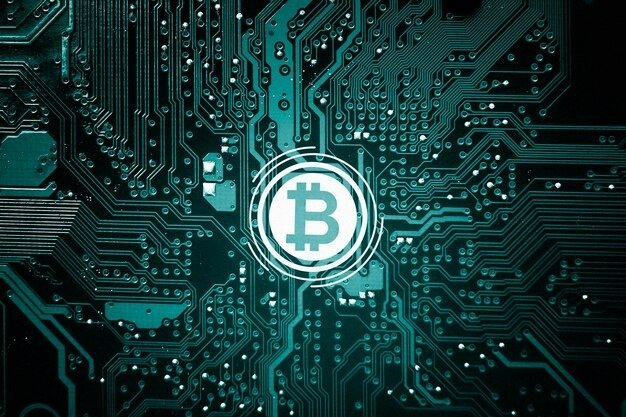Introduction
By: News Crypto
Date: 2025
The digital age has ushered in a plethora of innovations that are transforming industries and reshaping the way we interact with technology. Among these, blockchain technology stands out as a revolutionary force that promises to enhance security, transparency, and efficiency across various sectors. As we continue to explore this promising frontier, key concepts such as hashrate, Initial DEX Offerings (IDOs), Non-Fungible Tokens (NFTs), and tokenomics emerge as essential components that will define the future of digital assets and decentralized ecosystems.
Understanding Blockchain
At its core, blockchain technology is a decentralized digital ledger that securely records transactions across multiple computers. This decentralization eliminates the need for a central authority, reducing the risks of fraud and manipulation. Each block in the chain is linked to the previous one, creating a secure and immutable record of all transactions. Industries ranging from finance to supply chain management are leveraging blockchain to enhance transparency and traceability.
Hashrate: The Power Behind Blockchain
Hashrate refers to the computational power used to mine and process transactions on a blockchain network. It is a crucial metric that determines the security and efficiency of a blockchain. A higher hashrate means more computational power is being dedicated to the network, making it more secure against attacks. Miners, who validate transactions and create new blocks, compete to solve complex mathematical problems, and their success is rewarded with cryptocurrency. As blockchain technology evolves, understanding hashrate becomes essential for investors and developers alike.
Initial DEX Offerings (IDO): A New Era of Fundraising
Initial DEX Offerings represent a novel fundraising mechanism that allows cryptocurrency projects to raise capital directly from the community without the need for intermediaries. Unlike traditional Initial Coin Offerings (ICOs), IDOs are conducted on decentralized exchanges, providing greater accessibility and lower barriers to entry for investors. IDOs have gained popularity due to their ability to provide instant liquidity and price discovery, allowing projects to reach a broader audience while ensuring compliance with regulatory frameworks.
Non-Fungible Tokens (NFTs): Revolutionizing Digital Ownership
Non-Fungible Tokens have taken the digital world by storm, representing unique digital assets that are verified on the blockchain. Unlike cryptocurrencies such as Bitcoin or Ethereum, which are fungible and can be exchanged on a one-to-one basis, NFTs are distinct and often tied to specific pieces of content, such as art, music, or virtual real estate. This uniqueness has opened up new avenues for creators and collectors, enabling them to monetize their work and establish provenance in a digital landscape where ownership has historically been difficult to prove.
Tokenomics: The Economics of Digital Assets
Tokenomics refers to the study of the economic model surrounding a cryptocurrency or token. It encompasses the supply, distribution, and incentives that drive the value of a digital asset. A well-designed tokenomics structure is crucial for ensuring the long-term sustainability of a project, as it influences investor behavior and community engagement. Factors such as token supply, utility, and governance play a significant role in determining the success of a cryptocurrency in the ever-evolving market.
The Future: Integrating Blockchain Innovations
As we look to the future, the integration of blockchain innovations will likely reshape industries and create new economic paradigms. The convergence of hashrate advancements, IDO mechanisms, NFT proliferation, and robust tokenomics will drive the adoption of decentralized technologies. Businesses and individuals who embrace this transformation will gain a competitive edge in an increasingly digitized world.
Moreover, educational initiatives and policy frameworks will be vital in fostering a safe and inclusive environment for blockchain innovation. Stakeholders must collaborate to address regulatory challenges while promoting transparency and security in the evolving landscape of digital assets.

